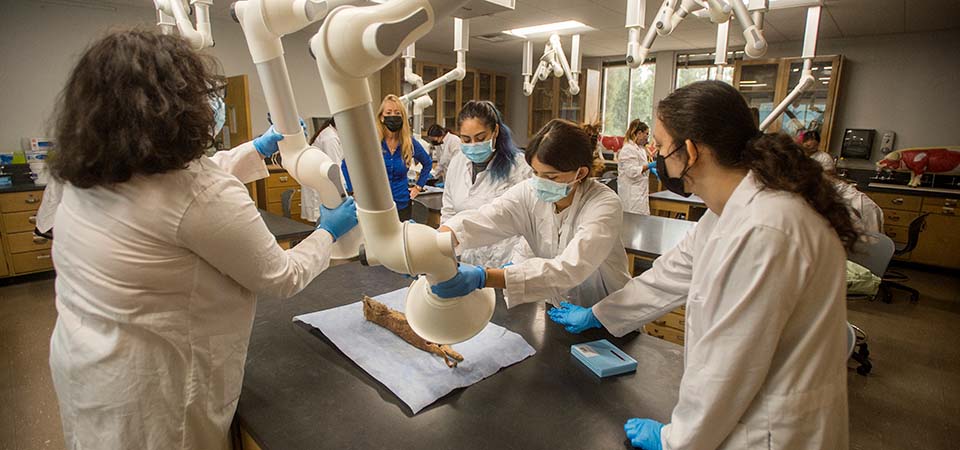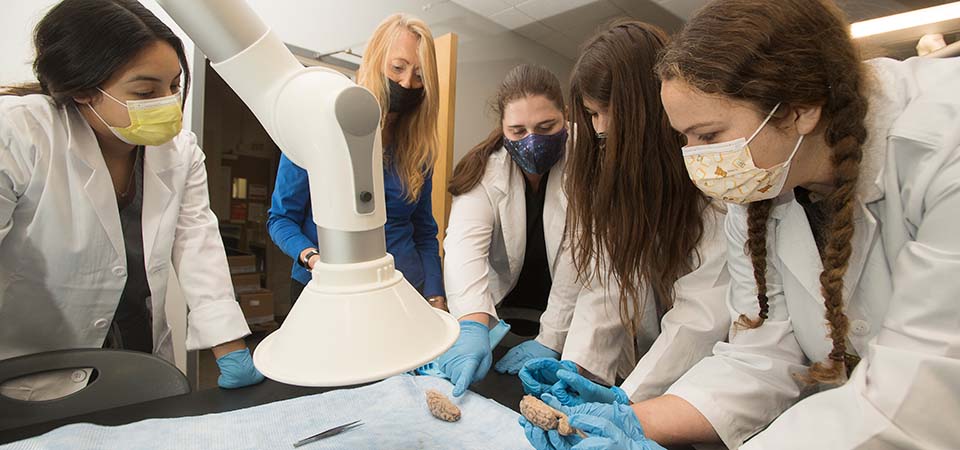Grant Helps AVS Revamp Lab
September 27, 2021
The Animal and Veterinary Science (AVS) Lab in the Huntley College of Agriculture got some much-needed improvements in time for the Fall 2021 semester, thanks to university grants.
The AVS lab (Building 2: Room 111) hosts classes or labs in clinical anatomy and physiology, food animal production, fundamentals of animal nutrition, biotechnology applications in animal science, and senior and graduate seminars.
“Every AVS student will use the lab at some point during their time at Cal Poly Pomona,” said Professor Shelton Murinda, the AVS department chair. “It’s imperative that we provide our students with the best learning environment possible.”
The lab needed improvements: it did not have an exhaust system to support the use of preserved specimens for anatomy and physiology labs. The specimens are preserved in a chemical that – while not toxic – is pungent enough to permeate Building 2 and sometimes make students feel ill.
Without an exhaust system to remove fumes, the AVS lab couldn’t hold those classes; instead, they were held in a lab with an exhaust system in Building 4, the Biotechnology Building. Because the classes in the Department of Biology had priority use of that classroom, the anatomy and physiology labs could only use it on Fridays.
In addition, the AVS lab’s cabinets were more than 40 years old and lacked security and enough space to store supplies for courses. Instead, faculty and staff had to store supplies and materials in other parts of Building 2 and carry them to the lab for classes.
Finally, the lighting system was old and poor. Scientific studies have shown that lighting in educational settings has a significant impact on learning and students’ academic achievement.
Holly Greene, a lecturer and animal compliance specialist and safety coordinator for the Department of Animal and Veterinary Science, applied for two grants from the university’s Special Project for Improving the Classroom Experience (SPICE) program.
Greene (’94, animal science; ’98, M.S. animal science) oversaw the classroom improvement and worked with Facilities Management to ensure completion by August 2021.
“This lab classroom had not changed since I was an undergraduate student. The improvement to this teaching area will have an enormous impact on the teaching environment for current and future students within the Department of Animal and Veterinary Sciences,” Greene said. “To me, this is an excellent outcome of SPICE funds and how they can be used to modernize the teaching classrooms across campus.”
The SPICE program awarded Greene $58,092 to help install an exhaust system, new cabinets, and lighting systems. The department covered the remaining balance of the $138,092 project.
“We’re glad that the university provided us the funding to improve our lab,” Murinda said, “and we’re especially pleased that they were able to finish the improvements before the beginning of the fall semester.”
In addition to these improvements, the animal and veterinary science department also plans to have new blinds installed on the AVS lab’s windows.

